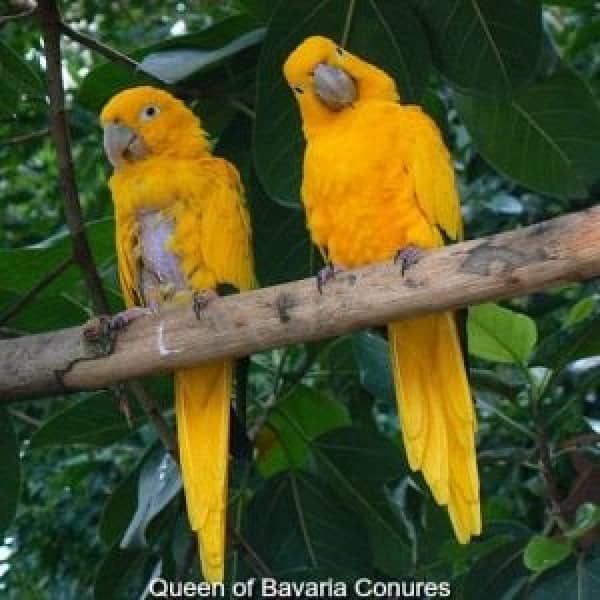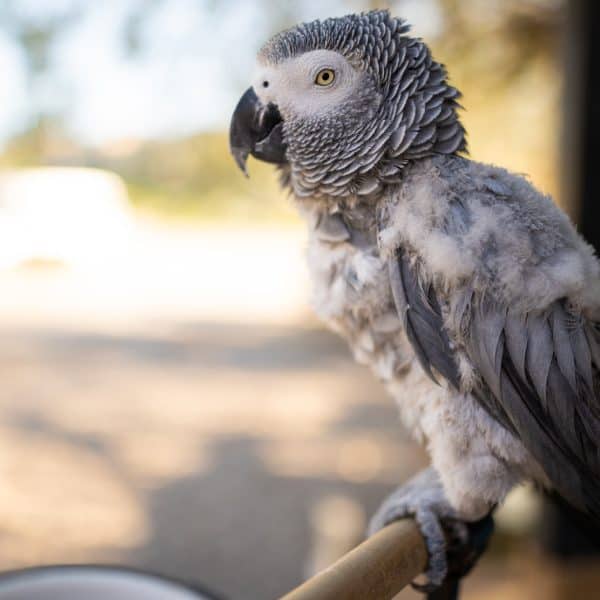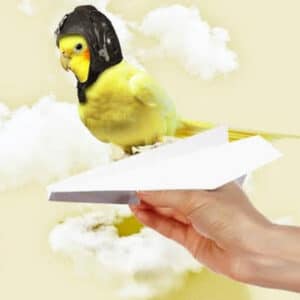Last Updated on by Mitch Rezman
We are trying something different today.
This is a video interview with Dr. Jenkins, a board certified avian veterinarian.
The video is sponsored by Chloe Sanctuary, a well-known and highly regarded bird rescue.
The two major issues I have with Dr. Jenkins are
1)Treating bird behavior simply with drug therapy.
Editor’s note: We’re having remarkable success using (benign and cheap) light therapy to reduce and or eliminate all sorts hormonal (plucking for one) behaviors.
We get information from many partners.
HARI, the Hagen Avicultural Research Institute works closely with the Ontario Veterinary College | University of Guelph and has been instrumental in guiding us in light therapy use.
2) These drugs can make their patients highly dependent upon them.
Editors note: Here I go again, undereducated and un-degreed arguing with a well-educated, respected multi-disciplined, veterinarian.
My insights come from many of the 8,000,000 or so captive bird owners I have interacted with on WindyCityParrot.com since 2002.
Going back to 1993, Catherine was a multi-species bird breeder for many years.
Breeding Lovebirds, Java Rice Finches, Green Singer Finches and a wide variety of Australian Grass Parakeets.
Had a couple of Moluccan Cockatoos for a short while, they got re-sold.
Today we share our home with 11 birds.
Missing: the instructions on how to safely taper off these medications once they are no longer needed to avoid withdrawal.
I’ve tried to keep each clip around 30 – 60 seconds.
Every segment is annotated by me.
The video in its entirety can be found at the bottom of this post.
The birds in these images indicate they were poorly cared for by their humans who waited much too long before seeking care.
This is their condition when arriving at the sanctuary.
“Once the end of importation,”
Translation: the beginning of human intervention (bird breeders).
Interestingly we recently discovered parrot breeders can be found as far back as 1000 years ago.
I’d love to find out if plucking was an issue way back then.
(I have reached out to the authors if that can be determined somehow)
Got it – it’s the bird’s fault.
Then why do WE see so many birds start plucking when they’re 5, 10 and recently a 27-year-old cockatiel?
Playpens cause dyslexia in humans – whoda thunk it?
I guess that why ice cream causes polio (we prove it in the next video).
Feathered factoid: one of the many reasons that African grey parrots of both species (Timneh and Congo) end up in rescues is because of their unique bonding paradigm.
Some bird species have incestuous relationship weakening the flock.
African grey parrots will bond with a bird in the flock or a human in their home at the age of around one.
Then they will re-bond with another bird or human at the age of five or six.
In the wild, this helps African greys from breeding with their mother or father.
Very few pet bird keepers know about this, can’t handle the rejection and confusion so the bird starts plucking gets rehomed.
Hey doc, thanks for the 53 seconds devoted to foraging and enrichment.
What the heck is Haldol (Haloperidol)?
Let this guy explain it
If birds could only speak their (numbed) minds.
Sounds like a forever thing to me.
Fact: It’s harder to kick a Xanax (Alprazolam) dependency than a heroin dependency.
Finally, 38 minutes in, we agree on something.
More good advice.
This cockatoo is on Haldol.
Is it me or are there no toys in any of those cages?
INSTRUCTIONS FOR
USE OF HALOPERIDOL LACTATE 2mg/ml
As promised the full video
annotated by Mitch Rezman
approved by Catherine Tobsing
Chloe Sanctuary’s response to this post:
“I hope you understand that feather destructive behavior usually ends in infection and death”.
Some of our thoughts on feather plucking
A response from one of our readers:
Hi Mitch –
would love to talk to you further on the feather plucking and haloperidol.
My little lovebird started self-mutilating (we went from zero to 60 in just a few weeks).
He already had light therapy to prevent night terrors and had occasionally plucked when having a major molt but this was a whole new level of plucking.
He had become territorial with his clutch mate resulting in separate cages on opposite sides of the room and was just an emotional mess – he wouldn’t play and the only comfort he seemed to have was cuddling with me and falling asleep in my sweatshirt or robe.
I worked with a behavioral therapist and my vet – we tried collars, his cage was already being cleaned and rearranged every 2 weeks, I bought foraging toys, we tried learning tricks to distract him, it was no good.
He became sicker and sicker so the therapist sent the contact info to me and my vet about the Haloperidol.
Kiwi has never been on more than a half dose and my sweet, playful bird is back with no night terrors, a good relationship with his clutch mate and now interested in grooming and tricks.
When he isn’t molting a try to taper him down as much as possible (we get down to a quarter dose per day without plucking).
I keep working on the diet and supplements to try to see if we can get off the Haloperidol completely but we haven’t gotten there yet.
I do know this, he isn’t dozy, he is engaged and from the first dose, he went from a tiny stress ball to a much happier bird.
That medicine saved his little life in a crisis.
Now to get him a quality of life without the medicine is the next step.
I am excited about how to taper him off and if you have any further time to discuss, I would be grateful.
Yours,
DawnMarie
Actually DawnMarie
you are way more informed than I am –
please keep us in the loop
my biggest concern is there are no studies on the long-term effects
re “He already had light therapy to prevent night terrors”
Is not the light therapy that we speak of
The nightlight might actually work against you by preventing the bird from sleeping.
Light therapy begins with having a light source no higher than 6 inches above the cage on a timer so that the light turns on and off and at 12-hour intervals mimicking the equatorial light cycle your bird has instinctually come to expect
Here’s some reading material that I hope will be helpful
https://windycityparrot.com/blog/2018/10/10/how-caged-bird-keepers-get-the-lighting-thing-wrong/
best
mitchr
Your zygodactyl footnote
Author Profile
Latest entries
 The Traveling BirdJune 26, 2025Can You Name 5 Parrot Species That Are Living Wild in the USA?
The Traveling BirdJune 26, 2025Can You Name 5 Parrot Species That Are Living Wild in the USA? Bird BehaviorJune 26, 2025How is it Parrots Are Problem Solvers Social Animals and Even Use Tools?
Bird BehaviorJune 26, 2025How is it Parrots Are Problem Solvers Social Animals and Even Use Tools? Bird & Parrot AnatomyJune 25, 2025How a Tiny Chemical Modification Makes Parrots Nature’s Living Paintings
Bird & Parrot AnatomyJune 25, 2025How a Tiny Chemical Modification Makes Parrots Nature’s Living Paintings PigeonsJune 20, 2025How Do Parrots Thrive in Cities Outside Their Native Habitats?
PigeonsJune 20, 2025How Do Parrots Thrive in Cities Outside Their Native Habitats?




